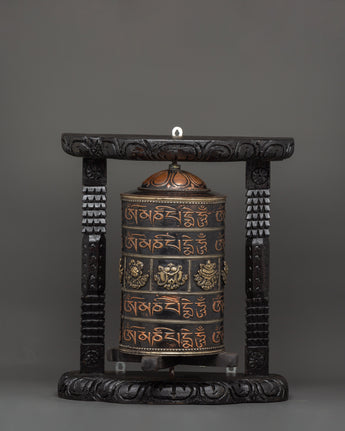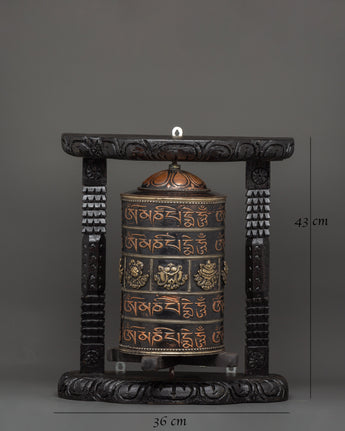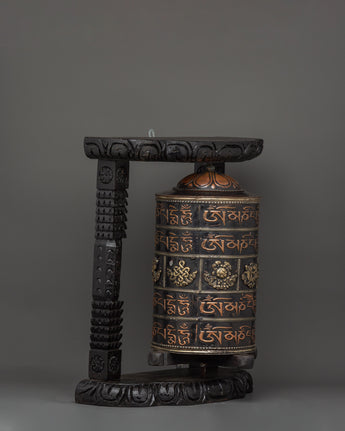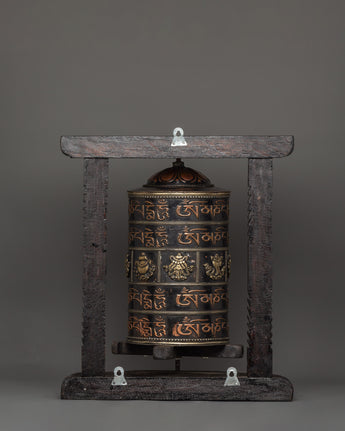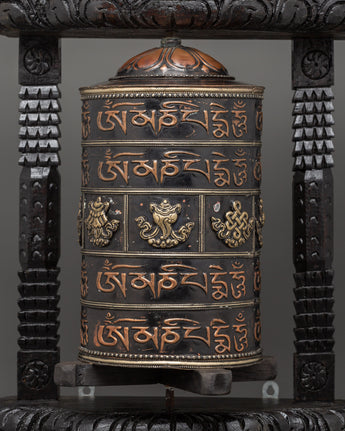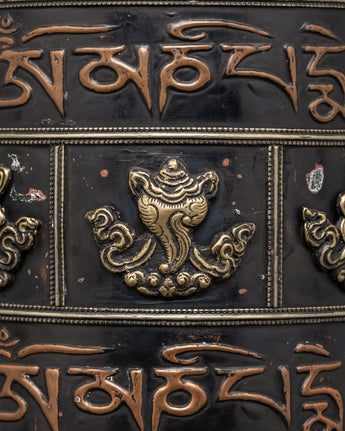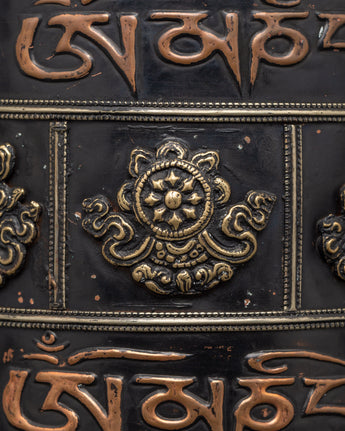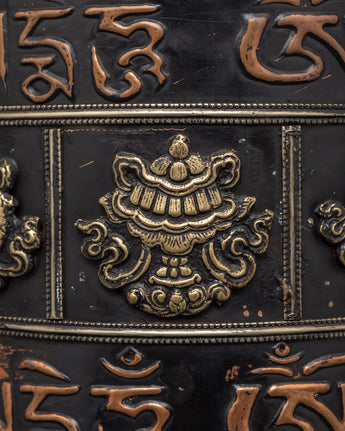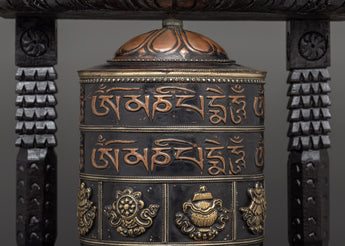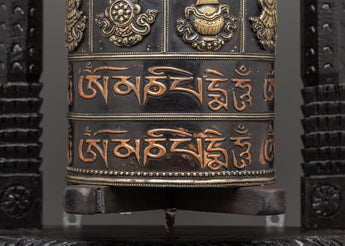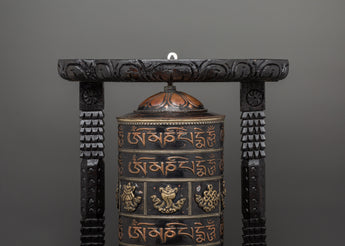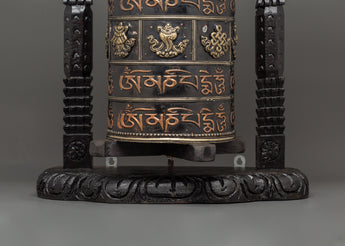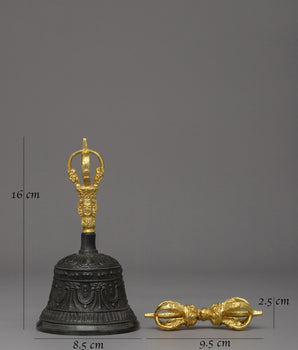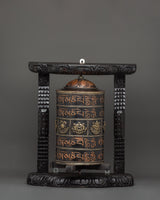
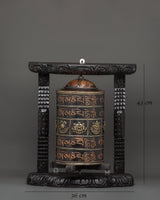
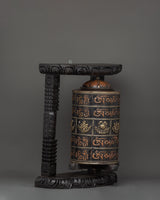
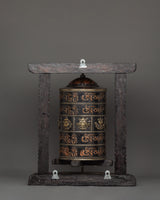
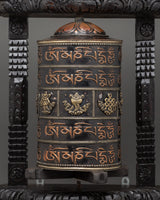
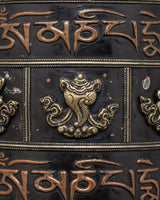
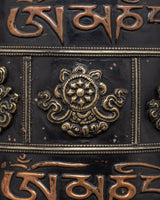
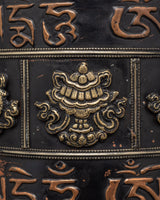
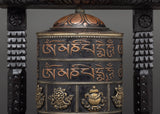
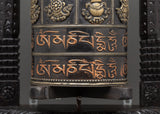
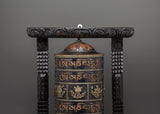
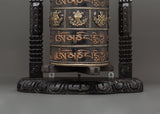
Prayer Wheel Carved with Wooden Frame | Copper & Brass Mantra Wheel
Prayer Wheel Carved with Wooden Frame | Copper & Brass Mantra Wheel
--------------------------------------------------------
Size: 43cm(Height) x 36cm(Width)
Weight: 3.12kg
Materials: Copper, brass, Wood
--------------------------------------------------------
About our Prayer Wheel
Bring the spiritual aura of Tibetan culture into your home with this large Tibetan Prayer Wheel. It is wonderfully embellished with mantras and contained in a hand-carved wooden frame with auspicious symbols. Standing 43cm tall, 36cm wide, and weighing 3.12kg, this strong ceremonial tool is made of copper and brass. The mantra "Om Mani Padme Hum" is etched continuously around the cylindrical spinner, symbolizing compassion and cleansing.
The wooden frame is intricately carved with Tibetan auspicious symbols that signify blessings, peace, and enlightenment. These religious themes and the mantra-filled wheel elevate the item to a spiritual powerhouse suitable for use in temples, home altars, or meditation spaces. Its smooth spinning design makes it a gorgeous showpiece and a meaningful instrument for gaining merit, focusing intention, and sharing positive energy.
Introduction to Prayer Wheel
A prayer wheel is cylindrical on a spindle and is used in Tibetan Buddhism. It is typically inscribed with the mantra "Om Mani Padme Hum" and rotated by hand as a form of spiritual practice and to accumulate merit. Spinning the wheel is believed to have the same spiritual benefits as verbally reciting the mantra. The use of prayer wheels is widespread in Tibetan Buddhism and has spread to other cultures.
How does the Buddhist Prayer Wheel benefit us?
The benefits associated with rotating the wheel are numerous. It promotes knowledge, compassion, and bodhicitta in the practitioner and improves siddhis (spiritual powers such as clairvoyance, precognition, etc.). The practitioner can repeat the mantra as often as possible while the wheel is rolling, maintaining a calm, meditative attitude. A Tibetan Buddhist tradition holds that after a practice session, one should dedicate any acquired merits to the benefit of all sentient beings. Then three times Om Ah Hum. This is usually among Tibetans after finishing any Buddhist practice, including the prayer wheel exercise.
How do you set up your own Buddhist Shrine?
• Find a clean, quiet, and uncluttered spot
• Set up an altar table and cover it with an altar cloth that calls to you
• Place your sacred item at the center

